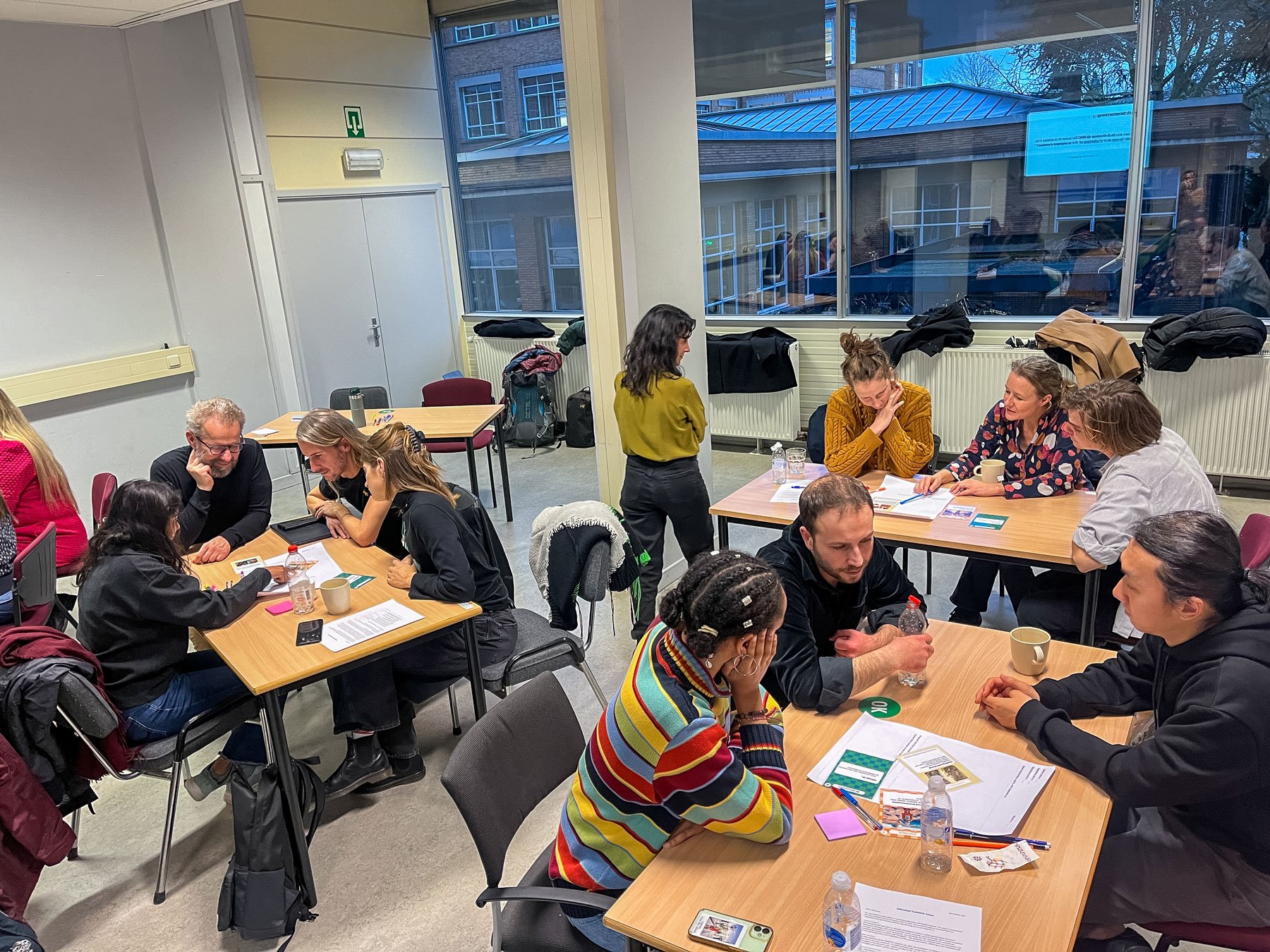The Inaugural NextSkins Newsletter: Where Biology Meets Design
Welcome to the First Edition of the NextSkins Newsletter!
NextSkins is more than just a research project—it’s a vision for the future of wearables, where materials are not just designed, but grown. Over the coming months, we’ll be sharing insights, updates, and behind-the-scenes glimpses into our work at the intersection of biotechnology, design, and material innovation.
What is NextSkins?
A collaboration of researchers, designers, and industry pioneers, NextSkins is exploring how living organisms and biological materials—such as bacterial cellulose and engineered DNA and proteins—can redefine the way we think about wearable technology. Our goal? To move beyond passive materials and create wearables that are adaptive, regenerative, and sustainable.
Funded as a European research initiative, NextSkins focuses on Engineered Living Materials (ELMs) and investigates two key material categories: Living Therapeutic Material and Living Regenerative Material. By integrating cutting-edge biodesign and synthetic biology approaches, we aim to develop materials that not only enhance user experience but also contribute to sustainability in fashion and healthcare.
Recent Activities: The Ghent Project Meeting
At the start of 2025 in January, the NextSkins team gathered in Ghent, Belgium, for a dynamic project meeting that brought together experts from multiple disciplines. These collaborative sessions are crucial in shaping our approach to living material innovation, ensuring continuity in research efforts from previous meetings in Delft, London, and Helsinki.
One of the highlights was a hands-on workshop led by our brilliant PhD candidate Verindi Vekemans. The session focused on the social implications of engineered living materials and their potential within regenerative material ecologies. Participants explored bacterial cellulose structures, specifically Biomineralized Bacterial Cellulose (BMBC) with self-healing properties, and the integration of living systems into next-gen wearables.
During the workshop, teams were challenged to conceptualize novel applications of engineered living materials across eight diverse contexts: mobility & transportation, wearables, healthcare, education & learning, domestic environments, urban infrastructure, agriculture, and energy systems.
This open-ended exploration was precisely the point—to discover unexpected potential applications for NextSkins technologies rather than limiting ourselves to predetermined use cases. The brainstorming sessions yielded fascinating concepts at various stages of development, from speculative future scenarios to near-term practical applications.
We send a big thank you to everyone who participated and contributed to these engaging discussions on the implications of ELMs, with special thanks to Stefano Parisi for co-facilitating, Fanzhe Zeng for invaluable support, and Elvin Karana for guidance throughout the process.
We were also thrilled to welcome guests from the Fungateria project (including Eveline Peeters and a talented team of PhD/Postdoc researchers), another pioneering EIC Pathfinder initiative exploring the potential of ELMs. The exchange of ideas between NextSkins and Fungateria provided exciting new perspectives on microbial-material interactions, opening pathways for future collaboration.
This inspiring two-day retreat reinforced our commitment to pushing the boundaries of regenerative material ecologies, living therapeutic skins, and the broader potential of living materials in biodesign. The diverse application contexts explored during the workshop will help guide our research directions in the coming months. Stay tuned for more details about these concepts in an upcoming blog article!
Publication Spotlight:
At NextSkins, we are dedicated to advancing the field of engineered living materials (ELMs) and regenerative material ecologies. Our research, published by our team, is shaping the future of bio-based wearable technologies—moving beyond sustainability into active regeneration. This Publication Spotlight highlights some of our key achievements, showcasing how our research contributes to the broader field while directly informing our material innovation strategies.
By focusing on bacterial cellulose, living artefacts, and the potential of bacterial spores, our work challenges conventional material design and offers new possibilities for wearables that interact with the body to enhance skin health. These milestones represent just some of our contributions to the field, demonstrating our commitment to developing materials that don’t just exist alongside human skin but actively support its well-being.
For our full and growing list of publications, and for their access, visit our publications section on our website, where we provide a dedicated page with links to full-text papers.
Living Artefacts for Regenerative Ecologies
One of the foundational publications shaping NextSkins is Living Artefacts for Regenerative Ecologies (by Elvin Karana et al., 2023). This paper develops on the established concept of living artefacts—designed outcomes that incorporate and sustain living organisms such as fungi, algae, bacteria, and plants—allowing for new forms of interaction, function, and expression in everyday life.
^ ‘The Daylight Log’ captures minute-by-minute light changes to support timely cyanobacteria care and raise awareness of daylight variation. (Image credits: Jiwei Zhou)
The concept of living artefacts challenges us to go beyond static biomaterials and explore how bacterial cellulose-based wearables could actively interact with the body and environment. In the context of eczema and sensitive skin conditions, this opens up possibilities for adaptive, bio-active clothing that not only minimizes irritation but also contributes to skin healing through its moisture-retaining, breathable, and potentially probiotic properties.
Furthermore, by drawing from the framework outlined in this paper—especially its five pillars of regenerative ecologies—NextSkins is positioned to develop wearables that don’t just reduce harm but actively contribute to well-being. This shifts the narrative from sustainability to regeneration, exploring how living materials can create therapeutic micro-environments on the skin.
< Biogarmentry (2019) by Roya Aghighi is a living garment made from natural fibers infused with photosynthetic microalgae. (Image credits: Roya Aghighi)
Designing Living Artefacts for Multispecies Interactions
Another key paper that help to illustrate NextSkin’s philosophy of approach is Designing Living Artefacts for Multispecies Interactions: An Ecological Approach by Ward Groutars et al. (2024). This recent research unpacks the dynamic interactions between living organisms within designed systems, emphasizing how multispecies relationships shape self-regulation, adaptability, and co-evolution.
^ Schematic showing multispecies interactions: within an artefact (Type 1), with non-humans (Type 2), and with humans (Type 3). (Image credit: Ward Groutars)
The study introduces an ecological design framework for integrating living artefacts—objects that incorporate biological life as an interactive component—within broader multispecies ecosystems.
For NextSkins, this perspective is crucial in shaping how we design bacterial cellulose-based wearables. Rather than viewing materials as passive carriers, we explore how bacterial cellulose can support beneficial microbial ecosystems on the skin.
This is particularly relevant in developing therapeutic wearables for eczema and other skin conditions, where the presence (or absence) of certain microorganisms can influence inflammation and healing. By applying the multispecies interaction framework from this paper, we can consider how bacterial cellulose wearables can be crafted to facilitate its coexistence with the human skin and multiple species balance, hydration, and overall skin health.
^ Diagram showing how different types of multispecies interactions are distributed across various examples. (Image credit: Ward Groutars)
This research challenges us to go beyond a purely human-centric perspective and design with sensitivity to the complex biological interactions happening at the microscopic level. Whether through embedding probiotic bacteria or tailoring the material’s porosity and moisture retention to encourage beneficial microbial activity, NextSkins is exploring wearables as living systems that contribute to both ecological and personal well-being.
Leveraging the Versatile Properties of Bacterial Spores in Materials
A recent publication, Leveraging the Versatile Properties of Bacterial Spores in Materials (Likhitha Kummetha et al., 2025), explores the potential of bacterial spores in materials science. This paper highlights how spores’ ability to enter a dormant state addresses key challenges in ELMs, such as cell viability, storage limitations, and environmental resilience.
For NextSkins, this research opens exciting new possibilities. By embedding bacterial spores into bacterial cellulose wearables, we are developing materials that can dynamically interact with the skin microbiome while remaining stable and functional over extended periods. Spores offer a solution to the traditional constraints of ELMs by allowing for long-term storage without refrigeration and activating beneficial biological functions only when needed.
^ Functional spore-based materials can store data, respond to humidity, or perform catalysis—without requiring germination. (Image credit: Kummetha et al., 2025)
This breakthrough has significant implications for regenerative therapies. We are investigating how engineered spores can release beneficial microorganisms or enzymes in response to environmental triggers—such as changes in temperature, pH, or moisture—creating wearables that actively contribute to skin health. By incorporating bacterial spores, NextSkins aims to develop self-regulating, adaptive materials that enhance therapeutic efficacy while maintaining ecological integrity.
The use of spores also enables more robust, portable, and scalable biomaterials. Our ongoing research builds upon this foundation to design wearables that harness the resilience and adaptability of bacterial spores, pushing the boundaries of what living materials can achieve in healthcare and sustainable design.
Advancing Engineered Living Materials Through NextSkins
Through our research contributions, NextSkins is shaping the emerging field of engineered living materials by integrating bacterial cellulose and bacterial spores into therapeutic, regenerative wearables. Our publications not only provide the conceptual framework for our innovations but also lay the groundwork for a broader shift toward dynamic, self-sustaining biomaterials that contribute to both human well-being and ecological health.
As we continue our work, we remain committed to expanding the potential of ELMs, fostering interdisciplinary collaboration, and redefining what it means to design with life. These publications serve as milestones in our journey toward creating the next generation of bio-integrated, regenerative wearables.
Meet the Team: The Minds Behind NextSkins
At NextSkins, we bring together a dynamic team of researchers, designers, and scientists who are redefining what it means to design with living materials. Our collaborative approach spans disciplines—from synthetic biology to biomolecular materials, design-driven innovation, and biophysics—ensuring that our work is as ambitious as it is grounded in rigorous research.
We invite you to explore our dedicated [team page] for a full list of members and advisory board experts, where you can learn more about the diverse expertise shaping NextSkins. Additionally, we will soon be launching a Meet the Team Q&A series, offering an in-depth look into the motivations, research, and personal insights of selected team members.
In the meantime, here’s a snapshot of some of the pioneering minds leading the NextSkins project:
Prof. Elvin Karana (TU Delft)
Elvin specializes in materials innovation and experiential design, directing research that integrates living organisms into everyday materials.
Prof. Tom Ellis (Imperial College London)
Prof. Tom Ellis is a synthetic genome engineering expert whose work with yeast, bacteria, and mammalian cells paves the way for engineered living materials.
Prof. Markus Linder (Aalto University)
Prof. Markus Linder brings expertise in biomolecular materials and protein engineering, focusing on integrating protein functionalities into living materials.
Dr. Marie-Eve Aubin-Tam (TU Delft)
Dr. Marie-Eve Aubin-Tam bridges biophysics and materials science, pioneering bacterial manufacturing of high-performance biomimetic materials.
Together, this leadership team is pushing the boundaries of biofabrication, shaping the future of regenerative and adaptive materials. Stay tuned for our upcoming interviews to get a closer look at the people behind the science!
Looking Ahead
Our next phase will focus on refining prototypes, testing biological materials for real-world applications, and engaging with communities interested in the future of sustainable materials. Expect deeper dives into specific projects, interviews with our collaborators, and reflections on the challenges and opportunities in biodesign. Key milestones ahead include prototype testing, expected publication releases, and new strategic partnerships that will shape the future of NextSkins.
Join the Conversation
This newsletter is just the beginning. We’d love to hear your thoughts, ideas, or any questions you have about NextSkins. If you’d like to contribute, collaborate, or simply follow our journey, feel free to reach out. You can join our mailing list, follow us on social media, or attend our upcoming events to stay involved.
Stay tuned for more updates, and thank you for being part of this exciting journey!












